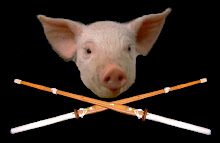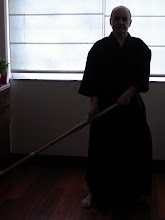Taken from: Explaining how to execute Oji Waza, or at least trying! (http://shinaiworld.com/execute-oji-waza/)Although in Kendo we practice to strike only four targets ( Men, Kote, Dou, Tsuki), kendo offers a broad range of techniques (to keep it short I will focus on the execution of Oji Waza).
The most popular description of Oji Waza I have read and heard counter attacking techniques. Most people describing the execution of Oji Waza would tell say is a “reaction to your opponent’s technique.” The problem with this description is that it is incomplete.
Many high ranking sensei explain that Oji Waza starts before your opponent’s attack, with the use of seme and pressure towards your opponent. Although we consider it to be a reaction, you want to have the control of the moment and not just stand there waiting for your opponent to do something.
The most common mistake we make when practicing and/or using Oji Waza during Keiko is that we make a decision on what technique we are going to execute before we approach our opponent and then we wait hoping that our he/she use the technique we are waiting for. This not only stops you from having control of the situation but also takes away your freedom to execute an appropriate technique according to the situation.
Read this from “AVI ROKAH” a Karate practitioner.
“It is important to understand that what I do is not a conscious choice; it is not in the brain, because there is no time for judgment, analyzing, decision and than movement.
If I choose what I will do to react, first it takes time and second I am stuck in my choice and not free to do what is necessary at the moment.”
( taken from here)
We must train the appropriate reaction in order to successfully do Oji Waza and that we can do frequently during practice, but what is often forgotten (specially at lower ranks) and that we must also train is what comes before, which is controlling the situation and making your opponent attack you.
The way it has been explained to me and I understand it is that you most approach and pressure your opponent to the point where he/she has no other option but to attack (and if he doesn’t then you should be in the right distance situation to attack), and then once your opponent is committed to an attack you counter.
In case you don’t know them yet, the different Oji Waza can be divided (according to the book “Best Kendo Waza”) into the following categories.
- Kaeshi
- Nuki
- Suriage
- Uchiotoshi
Because I like to see things more than reading about it enjoy and study the following video, in which the sensei demonstrates the approach forward before executing the counter technique.





No hay comentarios:
Publicar un comentario